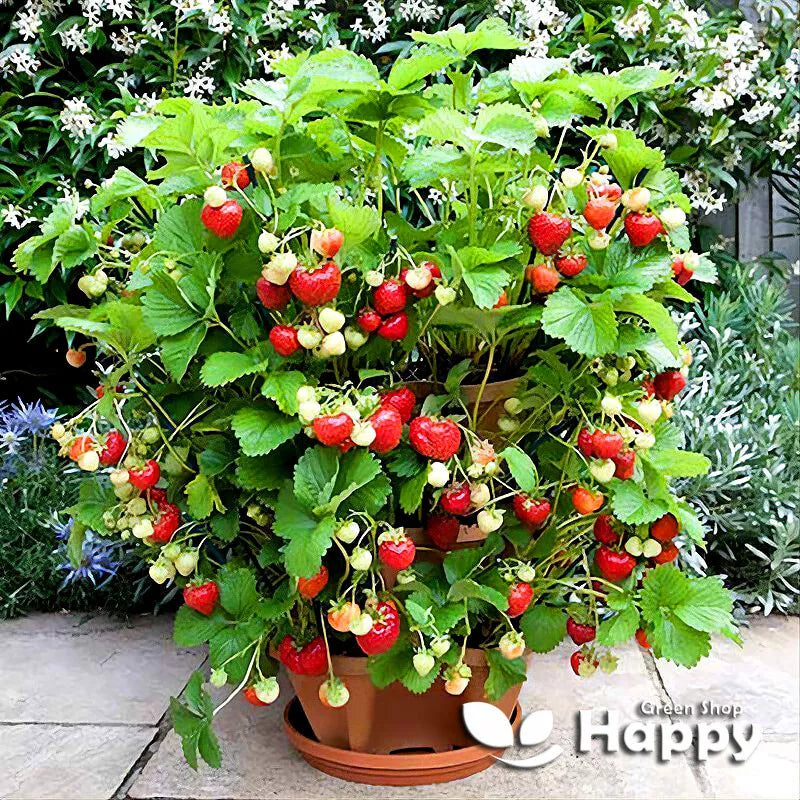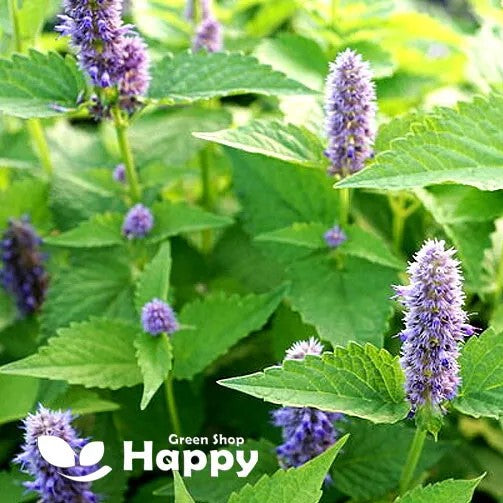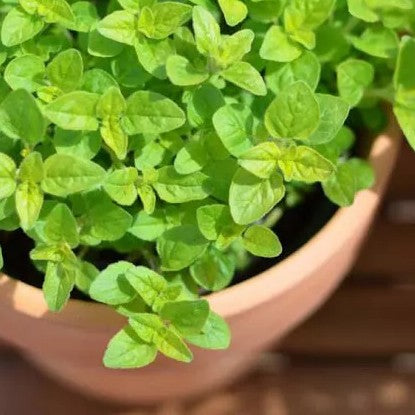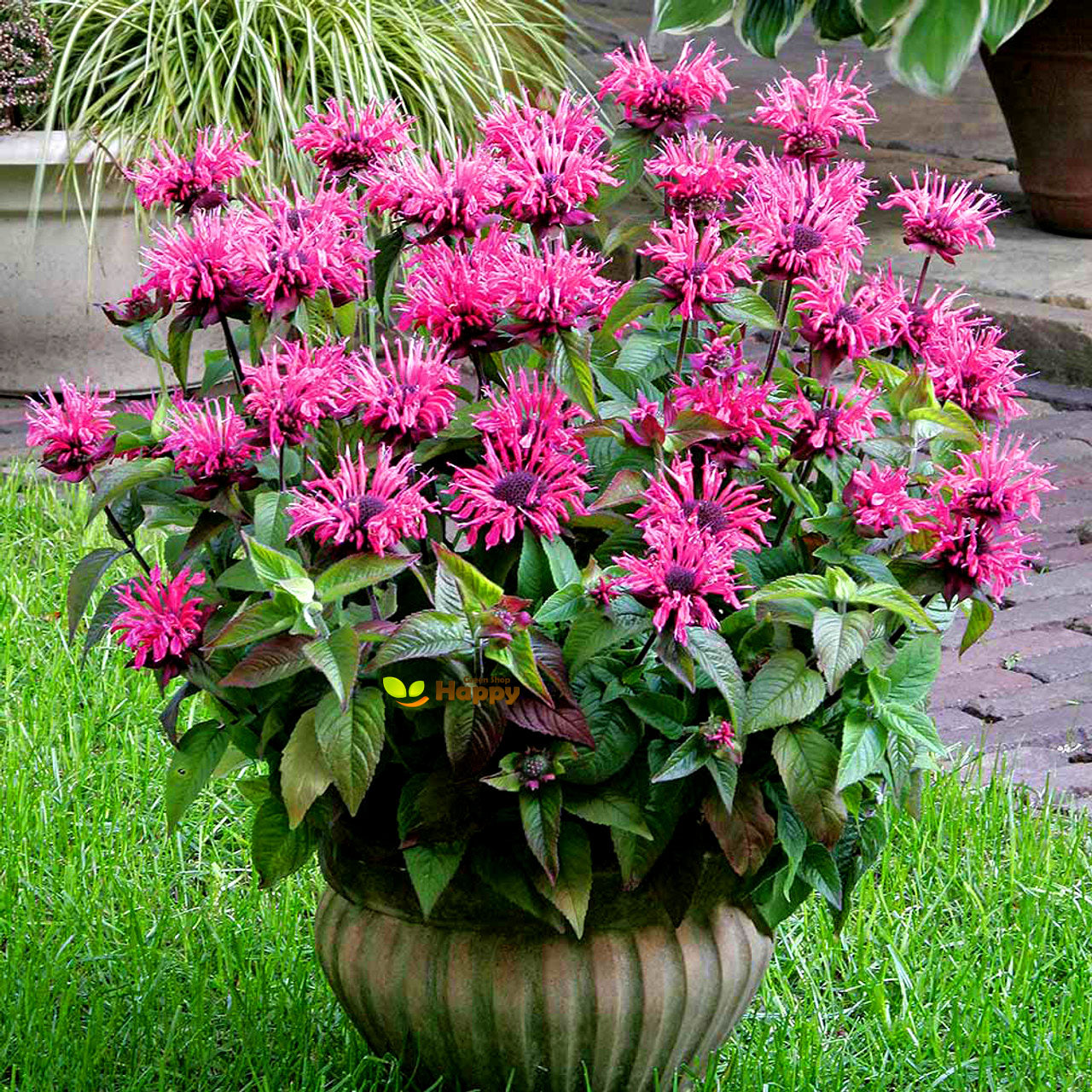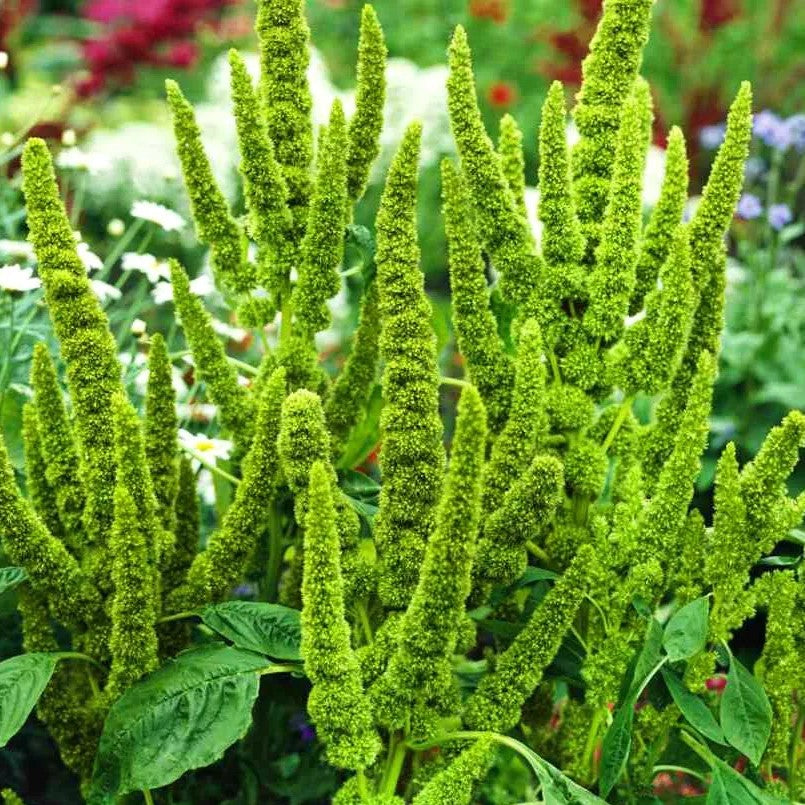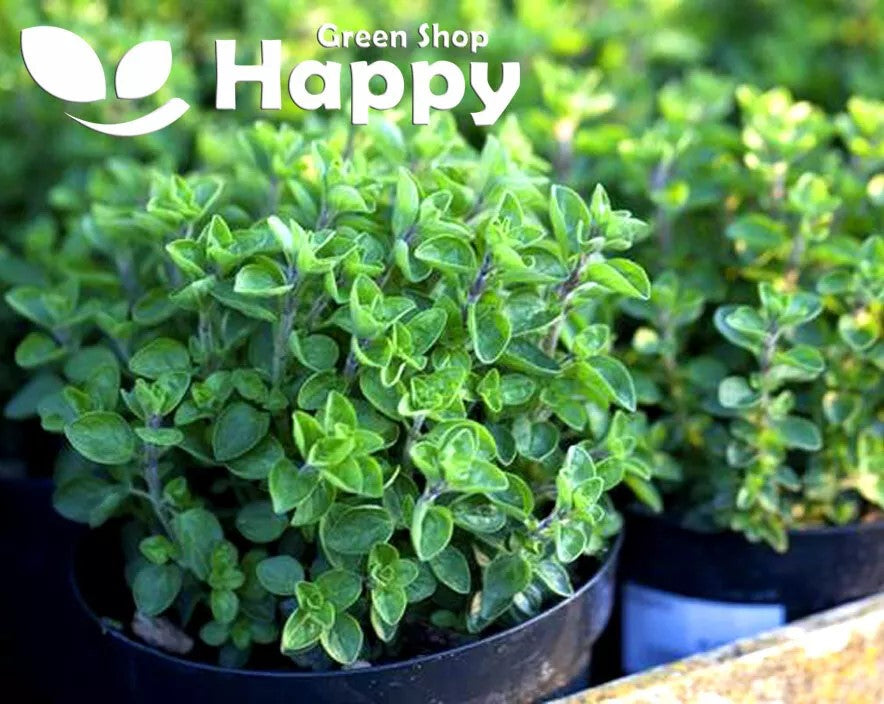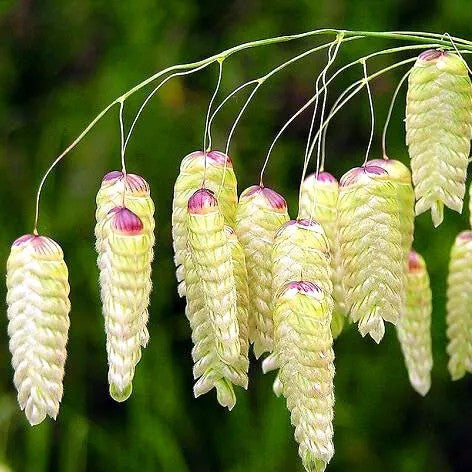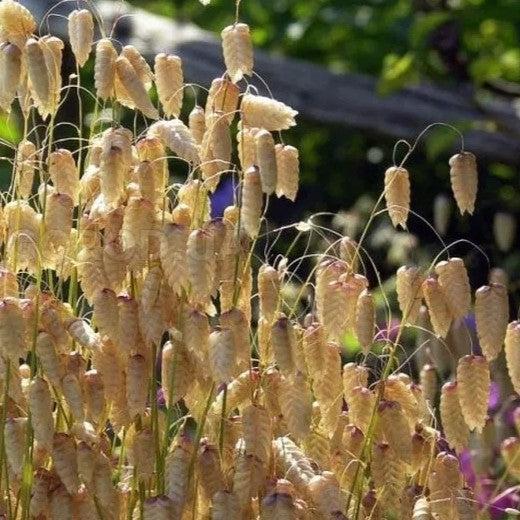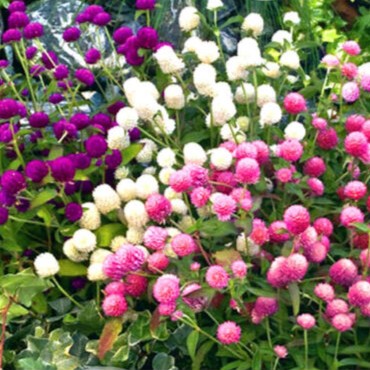Sort by:
435 products
435 products
Peppermint – Seeds (Mentha piperita)
Peppermint is a vigorous, aromatic perennial herb with refreshing, minty leaves. Known for its intense flavor and fragrance, it is perfect for teas, desserts, cocktails, sauces, and herbal remedies. Easy to grow and highly versatile, Peppermint thrives in containers, garden beds, and herb gardens, making it a must-have for any culinary or medicinal collection.
How to Grow
-
Sow seeds indoors from February to April, lightly covering with soil.
-
Maintain 18–22°C until germination.
-
Transplant seedlings outdoors after the last frost in a sunny or partially shaded spot.
-
Prefers moist, well-drained soil and regular watering.
-
Trim regularly to encourage bushy growth and prevent flowering.
Key Features
-
Aromatic, perennial herb with strong minty flavor
-
Fast-growing and easy to cultivate
-
Ideal for teas, desserts, sauces, and cocktails
-
Thrives in containers and garden beds
-
Suitable for culinary and medicinal use
Ideal For
-
Fresh and dried herbal teas, desserts, and beverages
-
Herb gardens, containers, and small spaces
-
Gardeners seeking aromatic and multipurpose herbs
Sowing & Harvest
-
Sow: February to April
-
Depth: Lightly covered
-
Harvest: May to October
Quick Tip
-
Regular harvesting of leaves encourages vigorous growth and keeps the plant flavorful.
Sweet Marjoram – Seeds (Tender Perennial Aromatic)
Sweet Marjoram is a fragrant, tender perennial herb prized for its delicate, sweet flavor. Perfect for seasoning soups, sauces, salads, and roasted dishes, it adds a subtle aromatic touch to your culinary creations. Compact and easy to grow, Sweet Marjoram is ideal for garden beds, containers, and herb gardens.
How to Grow
-
Sow seeds indoors from February to April, lightly covering with soil.
-
Maintain 18–22°C until germination.
-
Transplant seedlings outdoors after the last frost in a sunny, sheltered spot.
-
Prefers well-drained soil and regular watering.
-
Trim regularly to encourage bushy growth and prevent flowering.
Key Features
-
Tender perennial aromatic herb
-
Sweet, delicate flavor for culinary use
-
Compact, bushy growth habit
-
Ideal for garden beds, containers, and herb gardens
-
Perfect for fresh use or drying
Ideal For
-
Flavoring soups, sauces, and roasted dishes
-
Gardeners seeking aromatic, easy-to-grow herbs
-
Kitchen herb collections and container gardening
Sowing & Harvest
-
Sow: February to April
-
Depth: Lightly covered
-
Harvest: May to October
Quick Tip
-
Regularly snip leaves to encourage fresh growth and prevent the plant from flowering too early.
Herb Sage – Seeds
(Salvia officinalis)
Herb Sage is a hardy perennial herb prized for its aromatic leaves and culinary versatility. Perfect for seasoning meats, soups, and sauces, its gray-green foliage also adds texture and fragrance to herb gardens. Easy to grow and drought-tolerant once established, it attracts pollinators and enhances both edible and ornamental plantings.
Why Grow Herb Sage?
-
Aromatic leaves for culinary and medicinal use
-
Hardy perennial, drought-tolerant once established
-
Attracts bees and pollinators
-
Adds texture and fragrance to gardens
Key Features
-
Type: Perennial herb
-
Height: 30–60 cm
-
Flowers: Blue-purple, late spring to summer
-
Position: Full sun
-
Soil: Well-drained, moderately fertile
Ideal For
-
Herb and culinary gardens
-
Pollinator-friendly plantings
-
Containers, borders, and rockeries
-
Perennial garden beds
Sowing & Growing
-
Sow indoors: February–April in seed trays
-
Sow outdoors: April–May directly in prepared soil
-
Germination: 14–21 days at 18–20°C
-
Spacing: 25–30 cm apart
-
Care: Moderate watering; prune after flowering to encourage fresh growth
HERB BEE BALM SEEDS (Monarda didyma)
Add vibrant color and fragrance to your garden with Herb Bee Balm. This perennial produces striking red, pink, or purple flowers atop aromatic foliage, attracting bees, butterflies, and hummingbirds. Easy to grow and low-maintenance, it’s perfect for borders, beds, and pollinator-friendly gardens.
Why Grow "Herb Bee Balm"
-
Showy, fragrant flowers in red, pink, or purple
-
Attracts bees, butterflies, and hummingbirds
-
Low-maintenance, long-flowering perennial
-
Enhances borders, beds, and pollinator gardens
Key Features
-
Type: Perennial (Monarda didyma)
-
Height: 60–90 cm
-
Flowering: Summer (June–September)
-
Position: Full sun to partial shade
-
Uses: Borders, flower beds, pollinator gardens, containers
Ideal For
-
Adding vibrant color and fragrance to borders and beds
-
Pollinator-friendly gardens
-
Containers and patio planting
-
Beginner gardeners seeking easy-to-grow perennials
Sowing & Growing
-
Sow indoors: 6–8 weeks before the last frost
-
Sow outdoors: After frost danger has passed
-
Germination: 10–20 days
-
Space seedlings: 30–40 cm apart
-
Prefers well-drained soil and full sun for best flowering
Green Amaranth 'Thumb' Seeds (Amaranthus paniculatus)
Green Amaranth 'Thumb' is a fast-growing annual prized for its lush, upright green foliage and impressive plumed seed heads. Its striking vertical habit makes it ideal for adding height and texture to garden beds, borders, and containers. Easy to grow and low-maintenance, it’s perfect for both ornamental and edible purposes.
What Makes It Special
-
Upright, vibrant green foliage with dramatic plumed seed heads
-
Adds height, texture, and visual interest to garden plantings
-
Fast-growing and easy to cultivate
-
Can be grown for ornamental or edible use
Key Features
-
Botanical name: Amaranthus paniculatus
-
Variety: 'Thumb'
-
Seed count: Approx. seeds per pack
-
Height/Spread: 100–150 cm tall, 40–50 cm spread
-
Position: Full sun; fertile, well-drained soil
-
Flowering period: Late summer; mainly grown for foliage and seed heads
Ideal For
-
Borders and beds needing vertical interest
-
Containers and patio displays
-
Cutting gardens and dried flower arrangements
-
Edible foliage in home gardens
Sowing Instructions
-
When to sow: March–May indoors; April–June outdoors
-
How to sow:
-
Sow seeds 0.5–1 cm deep in seed trays or pots
-
Germination occurs in 10–14 days at 20–25°C
-
-
Transplanting: Plant seedlings outdoors 30–40 cm apart after frost
-
Care: Water regularly; support may be needed for taller plants; remove dead leaves to maintain appearance
Greek Oregano – Seeds (Origanum hirtum)
Greek Oregano (Origanum hirtum) is a robust perennial herb, prized for its intensely aromatic leaves that are essential in Mediterranean cooking. Known for its strong flavor, it is a must-have for seasoning pizzas, pasta, roasted meats, and vegetables. Easy to grow and drought-tolerant, it also produces clusters of small white flowers that attract bees and other pollinators.
Why Grow Greek Oregano?
-
Classic Mediterranean herb with strong, authentic flavor
-
Hardy perennial, easy to maintain
-
Drought-tolerant and thrives in poor soils
-
Attracts bees and pollinators when in bloom
Key Features
-
Type: Perennial herb
-
Height: 30–60 cm
-
Spread: 30–45 cm
-
Flowering: June–August
-
Position: Full sun
-
Soil: Light, well-drained
Ideal For
-
Culinary herb gardens
-
Mediterranean and rock gardens
-
Container growing
-
Pollinator-friendly borders
Sowing & Growing
-
Sow indoors: February–April in trays/pots
-
Germination: 10–21 days at 18–22°C
-
Transplant outdoors: After frost risk has passed
-
Direct sow outdoors: May–June
-
Spacing: 25–30 cm apart
-
Harvest leaves regularly for best flavor
Tip: Trim plants after flowering to keep them compact and encourage fresh growth.
Greater Quaking Grass Seeds (Briza maxima)
Greater Quaking Grass is a graceful ornamental grass admired for its nodding, heart-shaped seed heads that tremble and quiver in the breeze. This charming annual grass adds both texture and movement to garden displays and is a favourite for cutting and drying. Its unique seed heads shift from fresh green to golden shades as they mature, making it a versatile choice for borders, meadows, containers, and dried flower arrangements.
What Makes It Special
-
Distinctive quaking, heart-shaped seed heads
-
Creates elegant movement and sound in the garden
-
Excellent for cutting and drying
-
Easy to grow in sunny, well-drained sites
Key Features
-
Botanical name: Briza maxima
-
Common name: Greater Quaking Grass
-
Seed count: Approx. seeds per pack
-
Height/Spread: 45–60 cm tall, 20–30 cm spread
-
Position: Full sun; light, well-drained soil
-
Flowering period: June–August
Ideal For
-
Borders and ornamental grass displays
-
Wildflower and naturalistic gardens
-
Patio containers
-
Cut and dried flower arrangements
-
Adding movement to mixed planting schemes
Sowing Instructions
-
When to sow: March–May indoors, or April–June outdoors directly
-
How to sow:
-
Sow thinly in trays of seed compost or directly outdoors in prepared soil
-
Lightly cover with fine soil or compost
-
Keep moist until germination (14–21 days)
-
-
Transplant/Thin: Space plants 20–30 cm apart
-
Care: Low maintenance. Harvest seed heads when fully formed for use in arrangements.
Gourd ‘Wildy Weird Warted’ – Seeds (Cucurbita pepo)
Description:
Add quirky charm to your garden with Gourd ‘Wildy Weird Warted’ (Cucurbita pepo). This ornamental variety produces unusual, warted fruits in unique shapes and colors, perfect for autumn displays, crafts, and Halloween decorations. Easy to grow and fast-spreading, these gourds make a fun and creative addition to any garden, while also attracting pollinators during the flowering stage.
Key Features
-
Ornamental gourd with unique warted fruits
-
Fun and quirky shapes and colors
-
Long-lasting autumn display
-
Attracts pollinators during flowering
-
Easy to grow and fast-spreading
Ideal For
-
Autumn garden displays and decorations
-
Halloween crafts and arrangements
-
Containers, fences, and trellises
-
Pollinator-friendly gardens
Sowing & Growing
-
Sow Indoors: March–April
-
Sow Outdoors: After last frost, May
-
Germination: 7–14 days at 18–24°C
-
Spacing: 60–90 cm apart
-
Height/Spread: Vining, up to 3–4 m
-
Light: Full sun
-
Soil: Fertile, well-drained
Care Tips
-
Provide support for climbing vines if needed
-
Water regularly, keeping soil moist but not soggy
-
Fertilize with a balanced fertilizer every 2–3 weeks
-
Harvest mature fruits for decorations before frost
Gomphrena Mixed – Seeds (Gomphrena globosa)
Gomphrena Mixed (Gomphrena globosa) is a compact, long-flowering annual producing vibrant globe-shaped blooms in shades of pink, purple, red, and white. Its bushy habit makes it perfect for borders, containers, and bedding schemes. Easy to grow and drought-tolerant, this variety attracts pollinators and is excellent for fresh or dried floral arrangements.
Why Grow "Gomphrena Mixed"
-
Globe-shaped blooms in multiple vibrant colors
-
Long flowering season from summer to autumn
-
Drought-tolerant and low-maintenance
-
Attractive to bees, butterflies, and ideal for dried flowers
Key Features
-
Type: Annual (Gomphrena globosa)
-
Height: 25–40 cm
-
Flowering: Summer to autumn
-
Position: Full sun
-
Uses: Borders, beds, containers, cut and dried flowers, pollinator gardens
Ideal For
-
Adding vibrant color to borders and beds
-
Container and patio planting
-
Pollinator-friendly garden designs
-
Fresh and dried floral arrangements
Sowing & Growing
-
Sow indoors: 6–8 weeks before last frost
-
Sow outdoors: After frost danger has passed
-
Germination: 10–14 days
-
Space seedlings: 20–25 cm apart
-
Prefers well-drained soil and full sun
Showing 234/435


